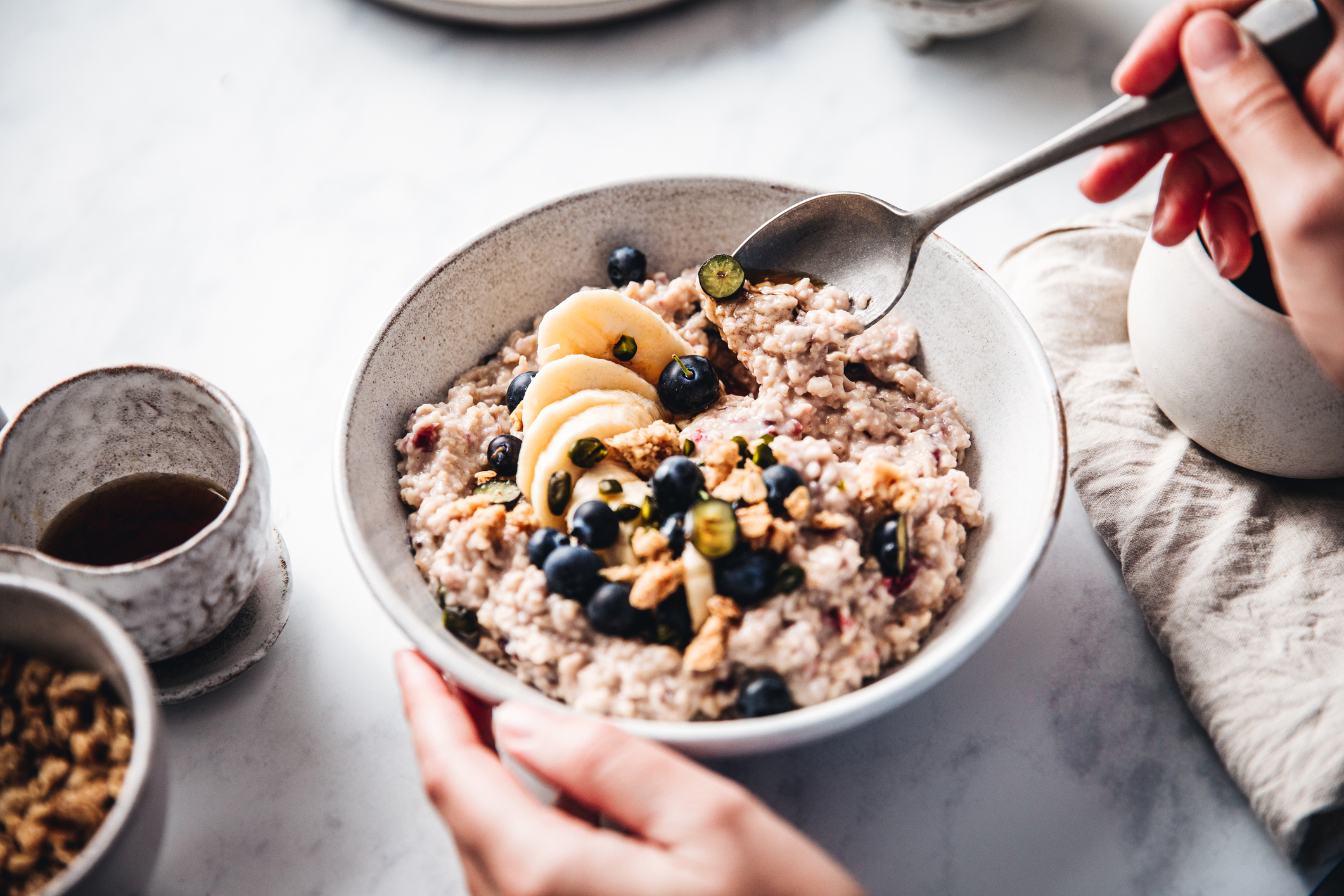Would you say that you had a fast metabolism?
Do you feel hungry regularly? Or, if you exercise more, do you find you can drop a few kilos quickly?
Or, maybe you are noticing that your metabolism is not as good as it once was, and you can no longer eat what ever you like without seeing the consequences on the scales.
READ MORE: Dietitian reveals the telltale sign you’re getting too much caffeine
For the average adult, metabolic rate, or the number of calories we need on a daily basis, gradually reduces as we get older, as a result of moving less, losing muscle mass and hormonal changes.
This can mean we do not burn calories as efficiently as we once did. So, if you are noticing it is harder than ever to keep on top of weight gain, here are some easy changes you can make to give your metabolic rate a boost.
Change something, change everything.
The body is exceptionally smart, and loves efficiency, which means if you move the same way, and eat the same thing every day, it is likely that your body has now become exceptionally efficient at burning calories over time, and as such is now burning fewer calories than it once did.
For this reason, constantly changing the way you exercise and eat helps to keep the metabolism working hard. So, if you always eat the same breakfast or do the same routine at the gym – change it.
Go to the gym before breakfast or after dinner rather than after breakfast, or make lunch your biggest meal of the day, leaving dinner as a light snack, and most importantly, keep changing these regimes regularly.
READ MORE: The wildest theories about Kate’s photo, debunked
Time to lift baby
If you are serious about increasing metabolic rate, you are going to need to add resistance training to your weekly routine, at least a couple of times each week.
Weight training does not mean lifting like a body builder, but it does mean lifting progressively heavier weights using all your key muscle groups to encourage the cells to grow.
The more muscle mass you have, the more calories you will burn and the higher your metabolic rate will be. If you are not familiar with weights, see a trainer to help write you a program or look for various classes held at all popular gyms that incorporate weights into their supervised classes.
READ MORE: The $22 kitchen gadget we can’t live without
Exercise efficiently
When it comes to exercise, efficiency is the key. It is much better metabolically to exercise harder for shorter periods of time, than it is to train with less intensity for longer.
It is also much better to use as many of your different muscles as you can, which is why running is such a good workout compared to sitting down and riding an exercise bike. Jumping, running, push-ups, any activity that uses a number of large muscles groups is going to be of the most benefit for those wanting to target their metabolic rate.
Adjust your meal number
The larger your meals are, the greater the amount of both calories and carbohydrates you are likely consuming. The more carbohydrates you consume, the greater the amount of insulin your body requires to process them. High levels of insulin over time are related to weight gain.
READ MORE: How to join the nine.com.au WhatsApp channel
While eating more frequently than every two hours is not ideal, aiming to consume small meals and snacks every three to four hours is a great way to increase the amount of energy being burnt to digest food and a small but significant increase in metabolic rate over time. This means that you are better to eat 4 to 5 small meals each day, every 3 to 4 hours, rather than 2 to 3 larger meals with coffee in between. If you begin to notice hunger every 3 hours, you are on the right track in terms of meal size.
Focus on protein
As a nutrient, protein requires slightly more calories to digest than carbohydrate or fat and for this reason adding a rich protein source such as milk, yoghurt, lean meat or fish, soy or eggs to each of your meals or snacks will help to optimise calorie burn.



